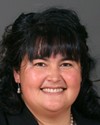Thank you, Mr. Chairman.
I am very pleased to have this opportunity to appear before this committee with Mr. John Rath-Wilson, Chief Operating Officer, to discuss the Auditor General's report on aging information technology systems and her recommendations.
Let me begin by saying that after thorough analysis, PWGSC accepts all of the Auditor General's recommendations related to the management of risk associated with aging information technology systems.
PWGSC's Information Technology Services Branch—or ITSB—has a dual function: to both manage our own department's information management and information technology, IM\IT, services and to deliver the Government of Canada's common IT infrastructure services, while acting on Treasury Board Secretariat Government of Canada-wide IM\IT strategic direction and policy.
Conscious of its critical role, ITSB has developed and continues to implement risk mitigation strategies related to its mission-critical systems.
As you know, the department's goal is to excel in government operations by providing high-quality programs and services that meet the needs of federal organizations and ensure sound stewardship on behalf of Canadians. I am proud to state that during the 2009-10 fiscal year, we achieved a record of infrastructure availability for our mission-critical systems of 99.7%. This is beyond our expectations.
These services are supported by IT systems, and it is important to note that none of our critical systems have ever experienced or caused a business failure.
We are pleased that the AG acknowledged that PWGSC has many of the required planning and monitoring elements already in place. She identified three recommendations that are specific to our department. The first recommendation calls for the implementation of a department-wide portfolio management approach. PWGSC has enhanced its IT governance to ensure it provides effective oversight of its IT portfolio, including maintaining an organized and prioritized inventory of all assets. Specifically, the new framework, which will be implemented over the next twelve months, will enable the department to use a consistent value and risk assessment process when deciding on investment for IT systems within program priorities.
The second recommendation calls for the development of a multi-year IT investment plan. In fact, by the time the Auditor General's report was released in April, PWGSC had already developed the first iteration of its five-year plan for information management and information technology.
In bringing together several existing components of our planning process, we examine mandatory and discretionary investment to improve overall service delivery and ensure that existing systems can be sustained.
Public Works has successfully managed a number of IT-enabled business projects under our current management approach. I know that in previous audits, Public Works has received positive marks for its project management capacity and capability.
Each year we have invested in maintaining our infrastructure. Over the past three years, we've increased our capacity and developed a multi-year rust-out plan. For example, we've invested $9 million in 2009-10 against our department's five-year plan. We have invested $29 million through Treasury Board funding for program integrity. This fully addressed critical IT infrastructure rust-out issues that were identified in 2007 and 2008.
In addition, ITSB is engaged in every major Public Works transformation project and investment, including $220 million for the pension modernization project; $192 million for the pay system modernization project, which will be completed in 2015-16; and $50 million in a new financial system aligned with the Treasury Board policy on the stewardship of financial management systems.
Also in support of our overall plan, we have established a central IT investment modernization fund to address other maintenance and evolution issues associated with legacy systems. As you can see, the department has various activities under way that will contribute to the success of our overall plan.
The third recommendation calls for the development of an action plan for managing risks related to aging IT systems.
We are pleased that the Auditor General has recognized Public Works' effort in identifying the risks associated with aging IT systems, and also recognizes that we have been diligent in submitting IT risks to our departmental risk officers.
Public Works has made significant progress in monitoring risks and is positioning itself to manage ongoing strategic and operational risks more proactively. The department is finalizing its operational risk profile and refreshing its corporate risk profile, both of which cite aging IT systems and their related applications as key risks. These profiles will better position Public Works to develop risk response strategies, to monitor and report on risk, and to identify emerging risks associated with IT infrastructure.
Semi-annual progress reports will be delivered to senior management while this strategy is being implemented.
Mr. Chair, ensuring the integrity of our critical systems is a top priority for PWGSC, and statistics indicate that we have achieved a high level of stability. For example, our standard payment system processed over 270 million payments last fiscal year, without system interruptions; and our print operations are ISO9001-certified, and we issue and distribute more than 100 million cheques and other documents per year. It is equally important to note that none of PWGSC's critical systems have ever caused a business failure, nor resulted in a disruption to business, due to our robust disaster recovery capability.
In fact, we rarely fall below our published performance targets. Meanwhile, we continue to witness that IT is enabling more and more government services and programs, so we will continue to aim for our best in service performance and evolution. I would be pleased to answer your questions. Thank you.










